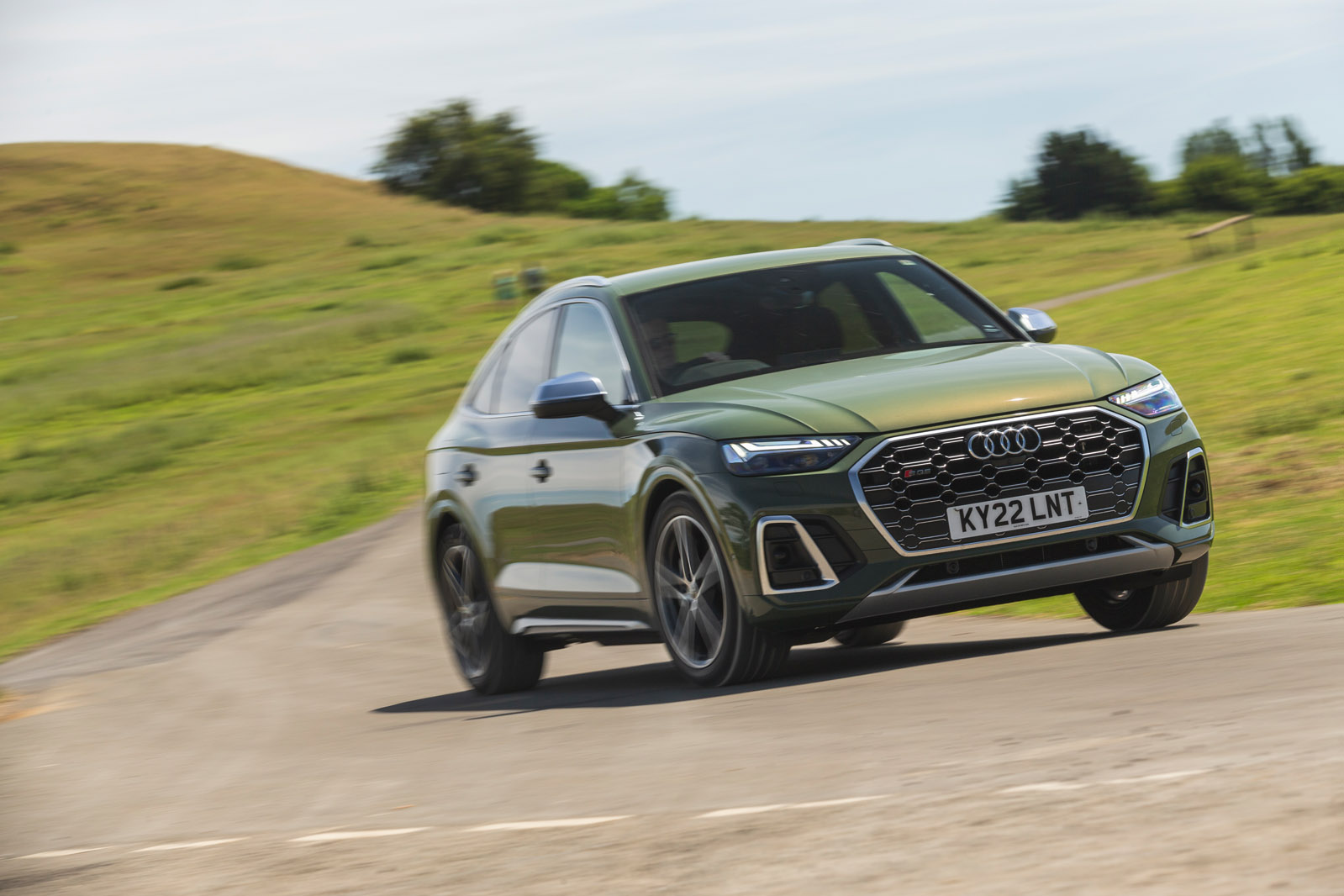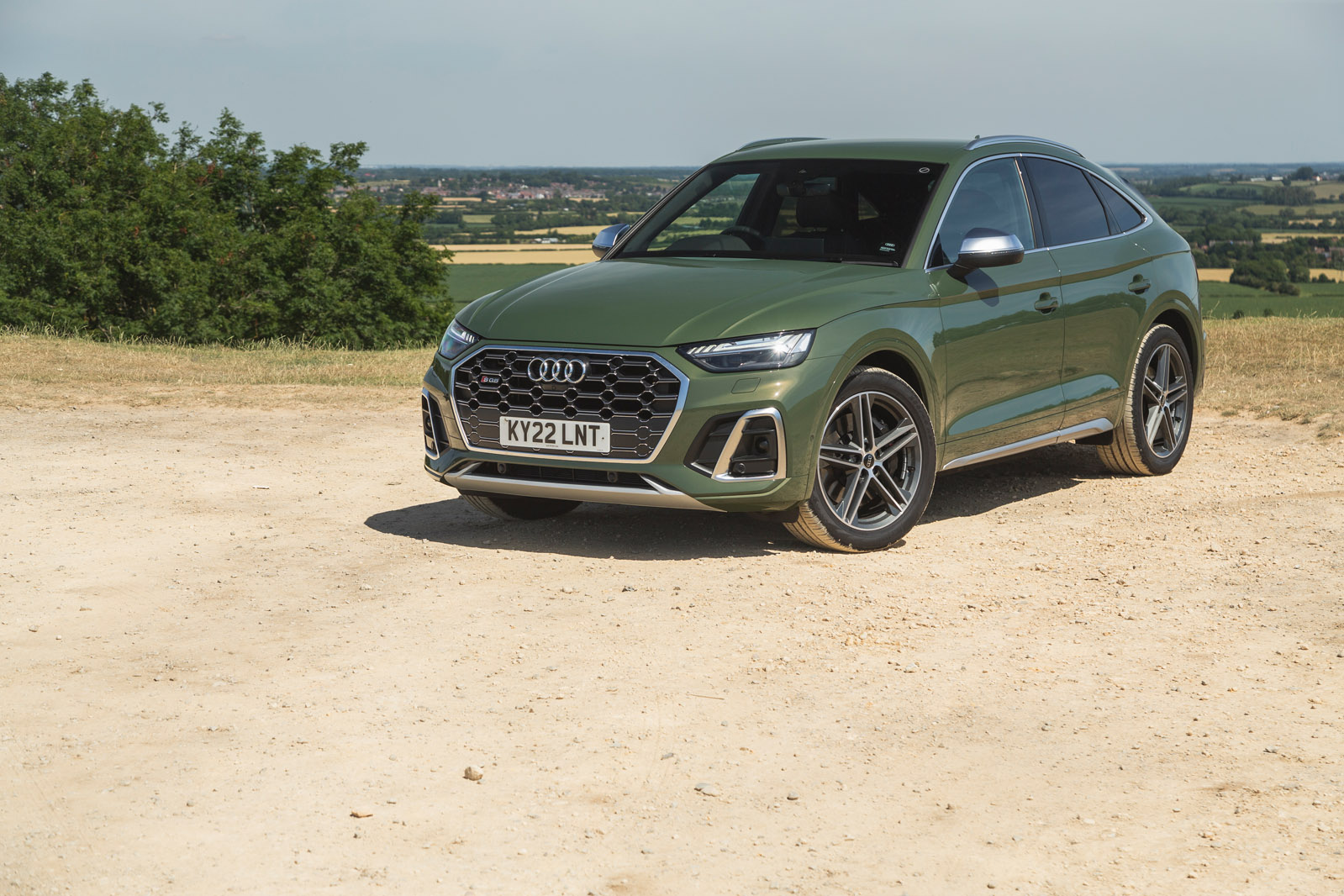The Audi SQ5 Sportback is an interesting mark of how far the mission of the modern luxury SUV has drifted from the function-first versatility that used to characterise these kinds of family cars. It’s fairly practical, comfortable, commodious and versatile, and there are certainly modern performance SUVs out there that are less spacious, mild-mannered and efficient.
However, in its bid to combine some sporting athleticism of design with both SUV-typical size and space with modern, equipment-heavy luxury car appeal, the SQ5 does raise the odd eyebrow. Our test car had no spare wheel at all, for instance (since an audio system subwoofer is a lot less useful in the event of a puncture on a stony track, we tend to prefer our SUVs with at least some kind of spare).
It also had a fixed-height boot floor with little useful storage underneath and an annoying loading lip at its trailing edge. There was some cargo bay variability, thanks to 40:20:40-split folding rear seatbacks, but no sliding second-row seats as standard (another perk of Vorsprung models).
The SQ5 Sportback’s rear seats offer reasonable leg and head room for adults of average height, but taller adults won’t be particularly comfortable in them owing to their flat bases and their slightly restricted lateral visibility. Up front, there is more generous adult-appropriate space. Taller drivers won’t struggle to find a comfortable seating position in the standard sports seat, which had extendable under-thigh support and a massager in our test car’s case.
One tester noted the SQ5 Sportback’s offset pedals, however, which inadvertently inclined him to perch on the outboard lateral bolster of the seat base a little, so as to be straighter on the pedals. That, in turn, adversely affected comfort on longer trips.
The dashboard layout is dominated by a free-standing 10.1in infotainment screen, which is of Audi’s latest MIB-3 software generation. But it also means there is no longer any tactile input device, nor any auxiliary controller for it (which the regular Audi Q5 lost as part of its 2020 facelift). Most testers found the new system less easy to browse while driving as a result of losing its separate input device (see ‘Multimedia system’, right), although the system’s menus are clearly presented.
Elsewhere on the fascia, the SQ5 has kept its metallised physical heater controls, which may look dated but are undeniably easy to use. It has quite a plain, monotone mix of cabin materials, which are smart-looking but typically reserved, lacking a little bit of richness, intrigue and performance flavour.
Multimedia

A new, third-generation infotainment system was among the key features of the facelifted Q5, and the Sportback got it automatically. It expands the regular Q5’s connectivity offering to include wireless mirroring for Apple and Android devices, while Audi Phone Box supports wireless charging as standard.
Amazon Alexa voice control is fully integrated, but even so, with Audi having taken the old system’s separate tactile input device away and gone touchscreen/voice control only for information and command input, usability has taken a step backwards. There is no means by which to move a cursor around the screen while you are driving, either on the transmission tunnel or the steering wheel, and the screen itself is a bit of a stretch to reach without leaning forward in your seat.
The layout and navigability of the touchscreen interface, once you’re jabbing and swiping at it, are both pretty good; you can set up your own home screen; and there are separate physical heater controls. Really, a cursor controller is all that’s missing – but it is now a conspicuous omission.



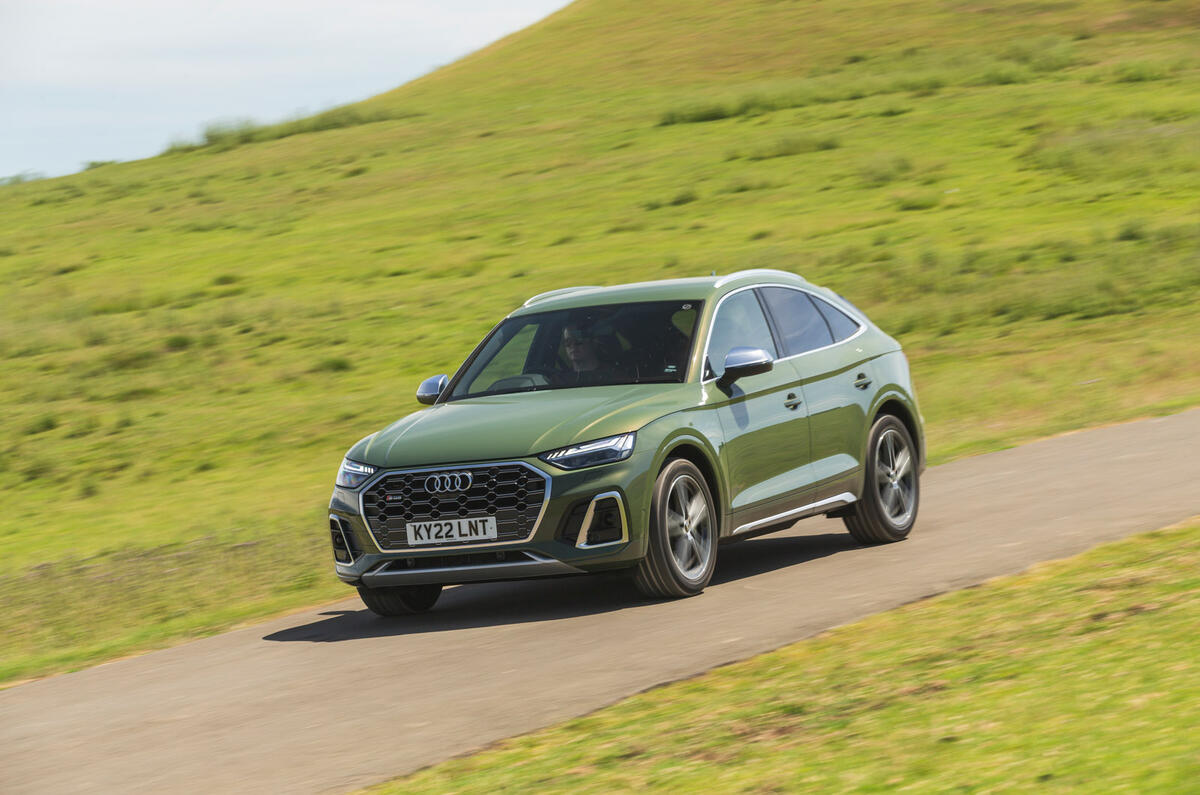
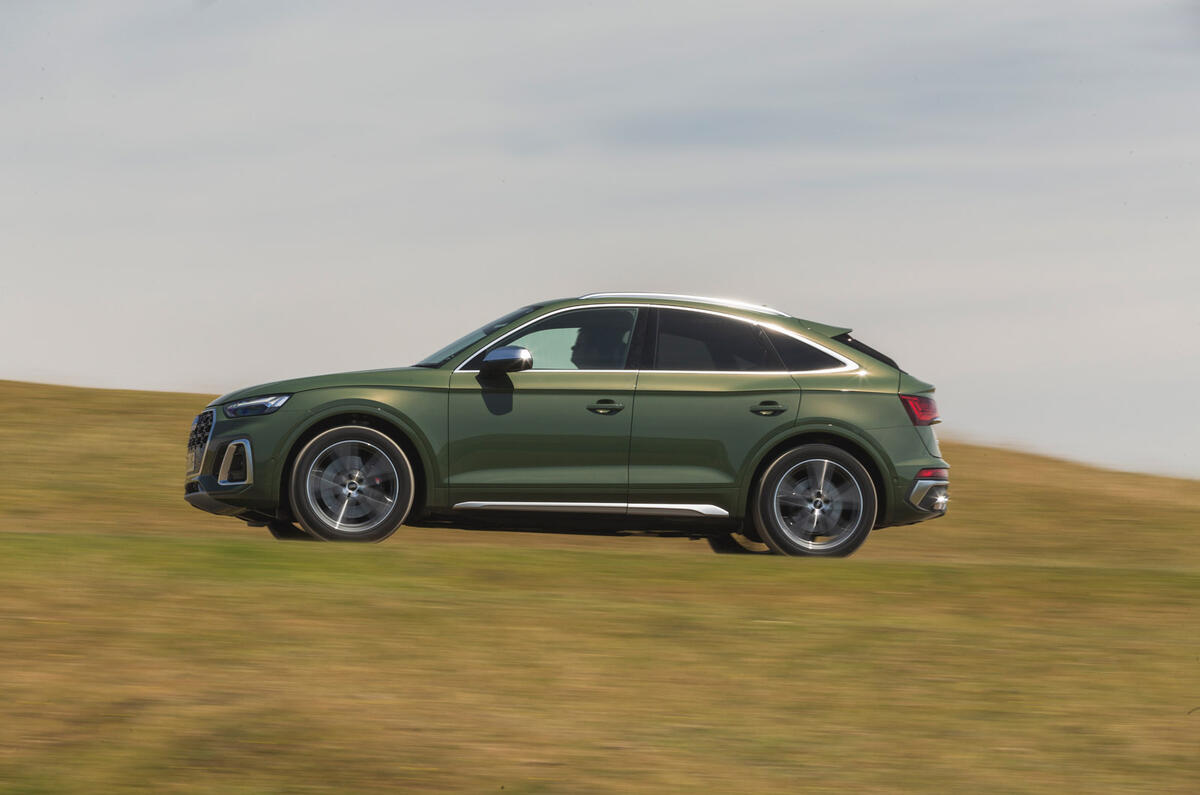

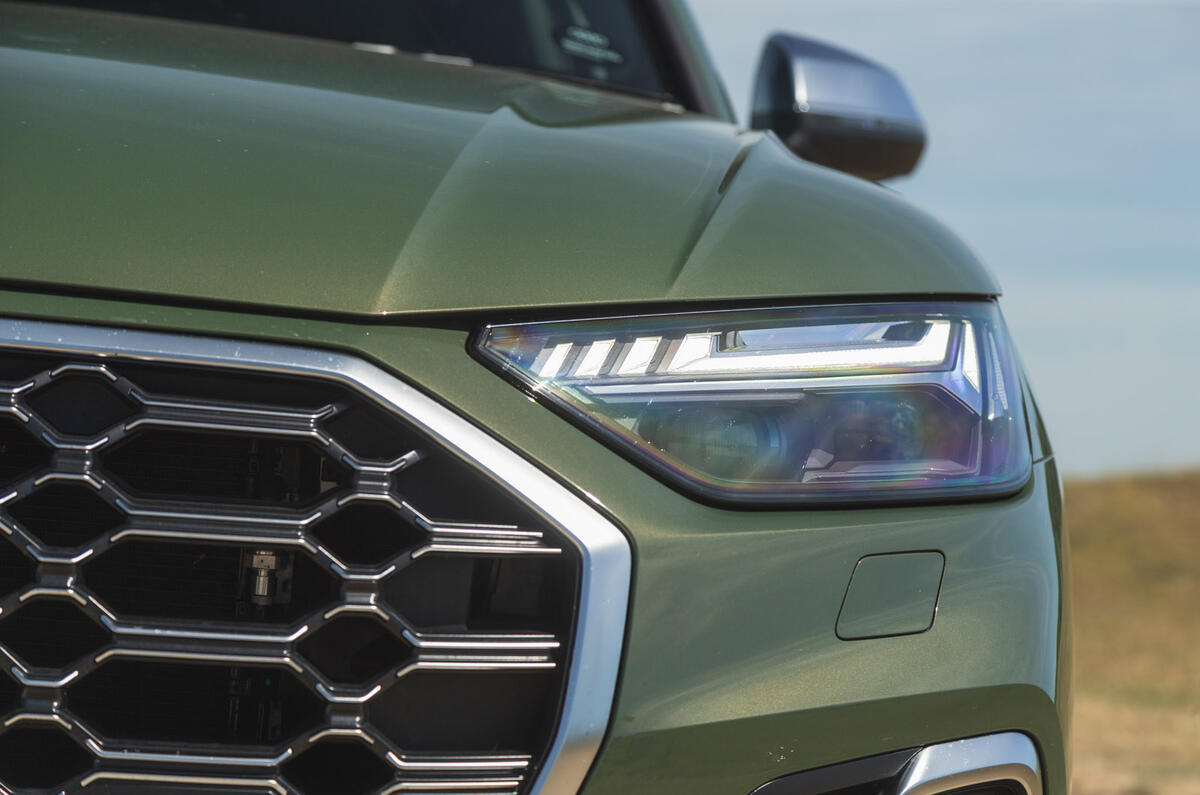
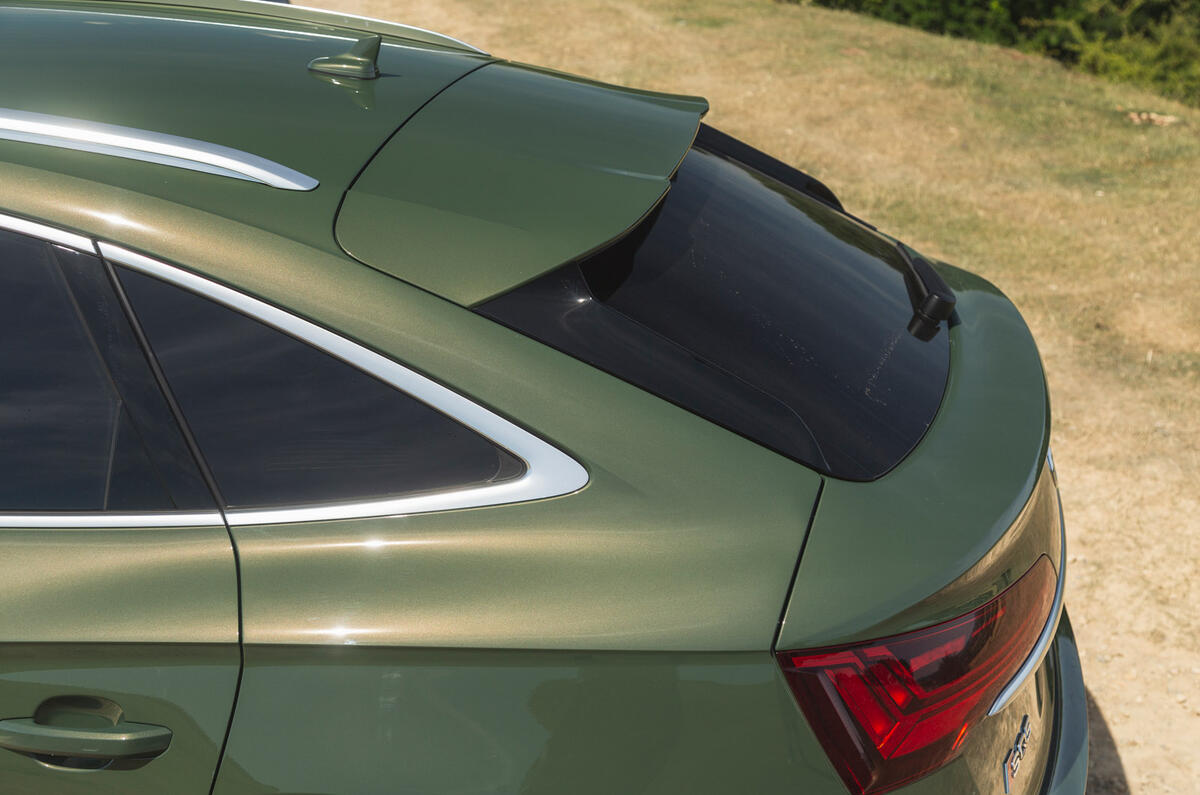
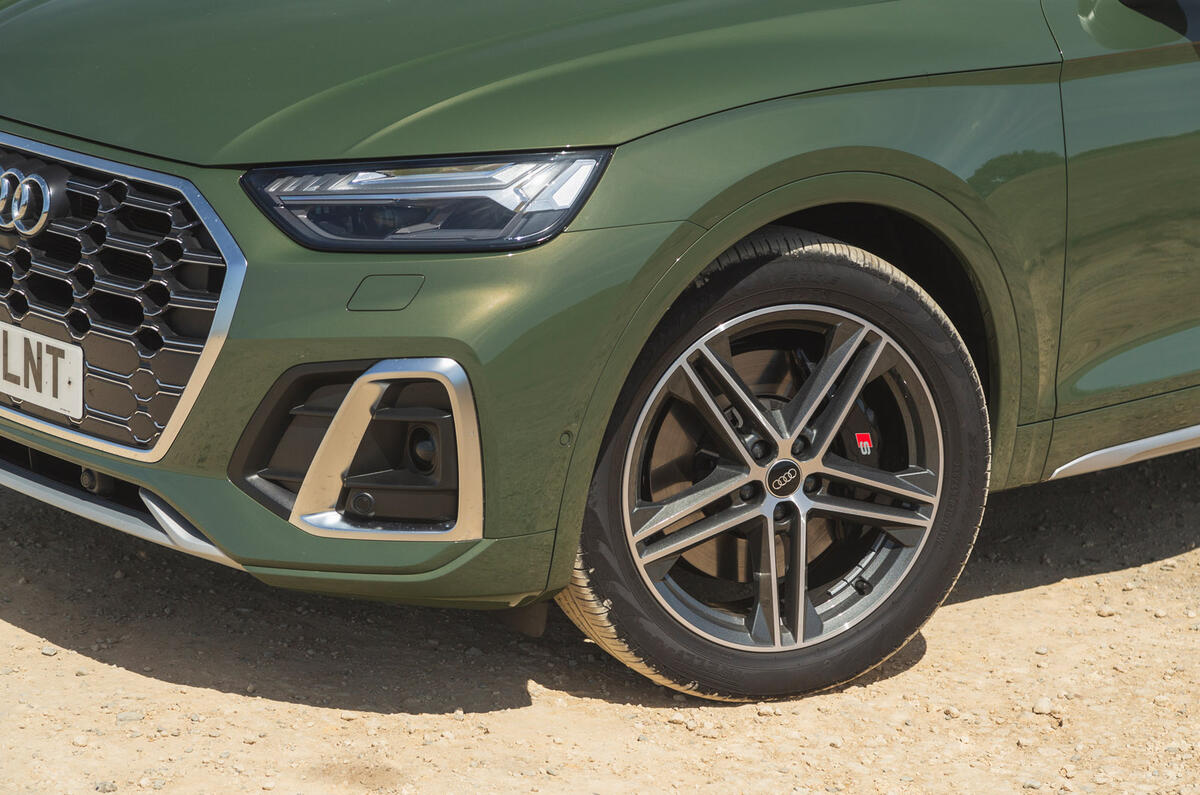
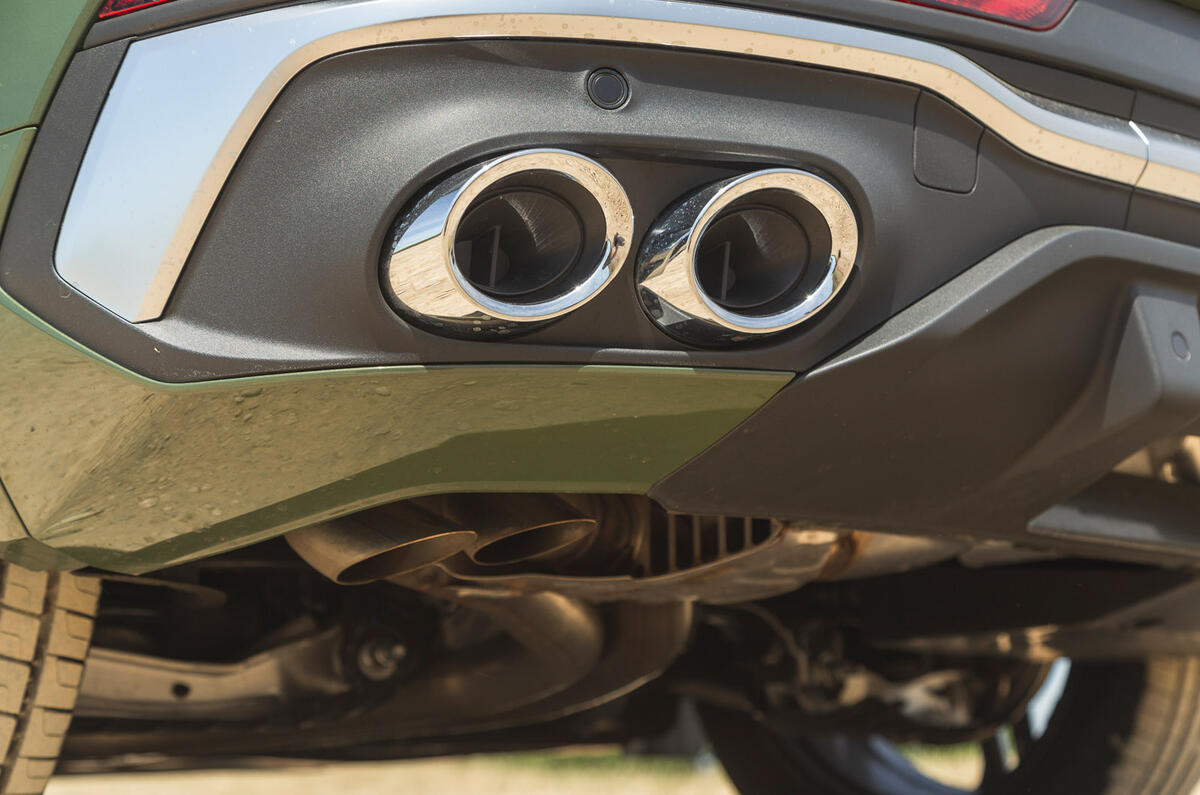
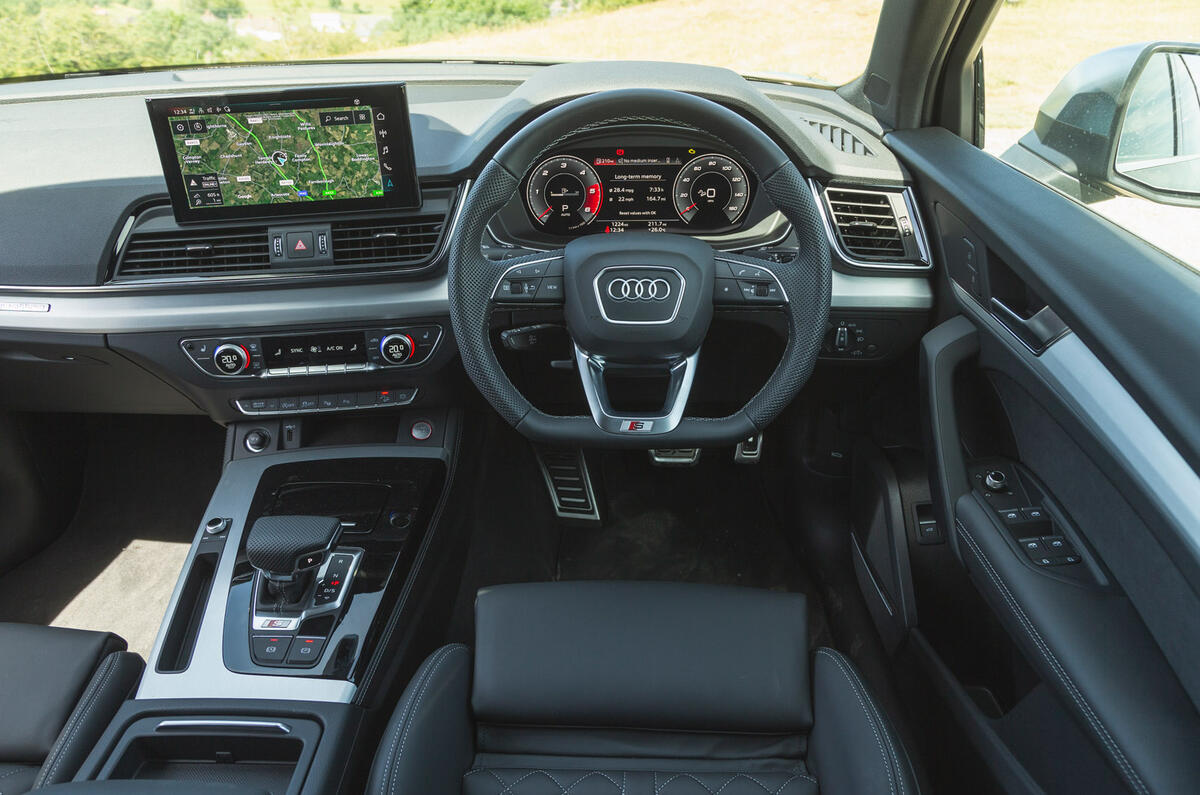
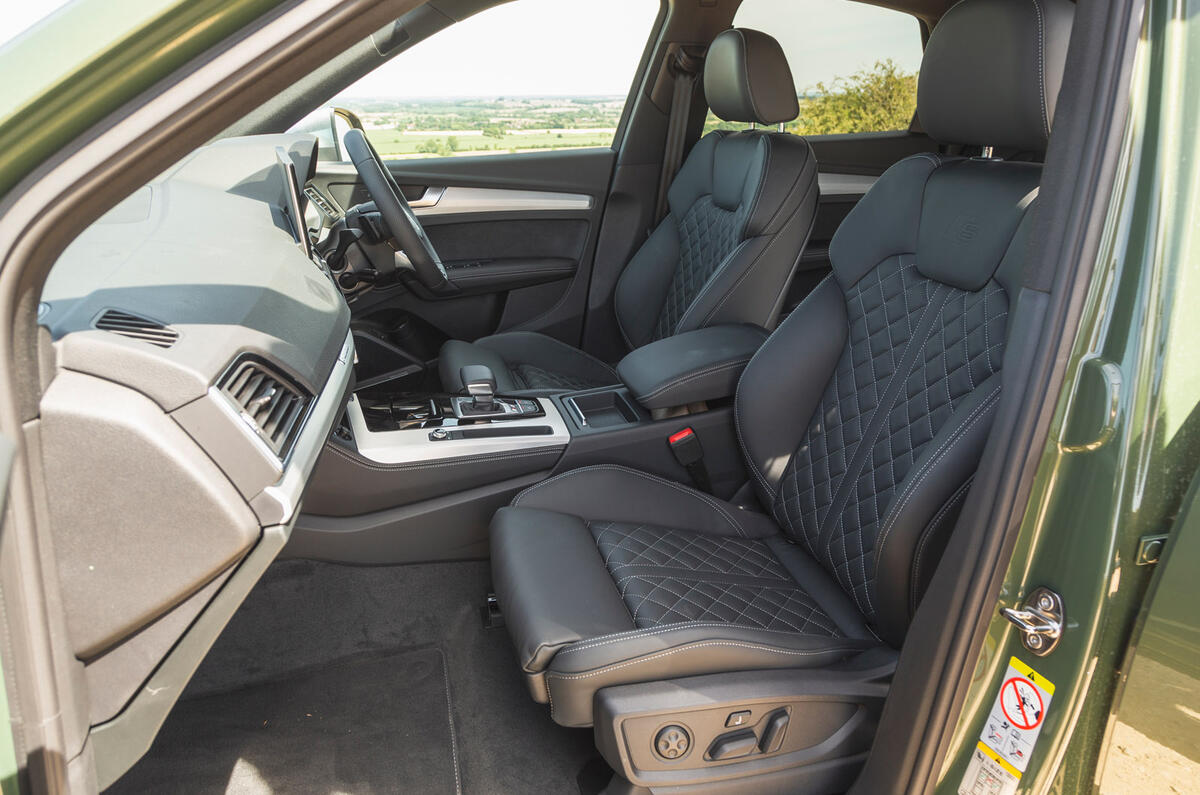
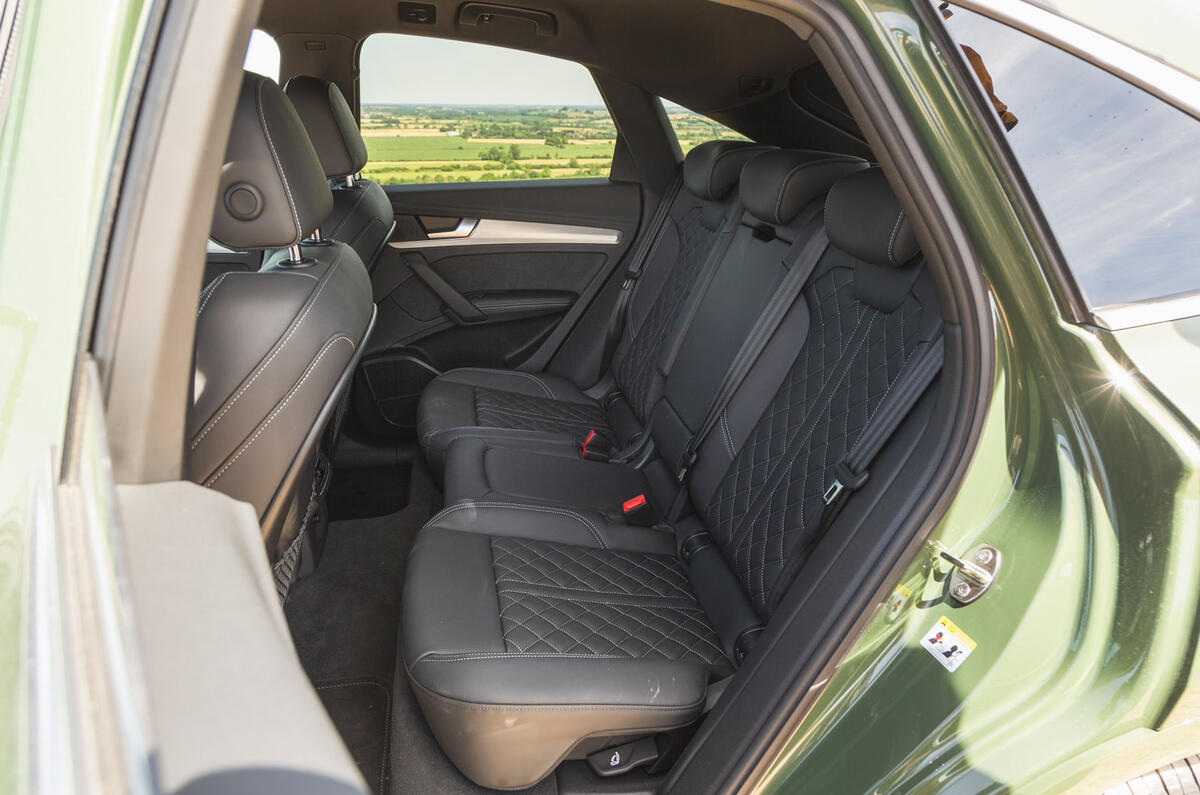
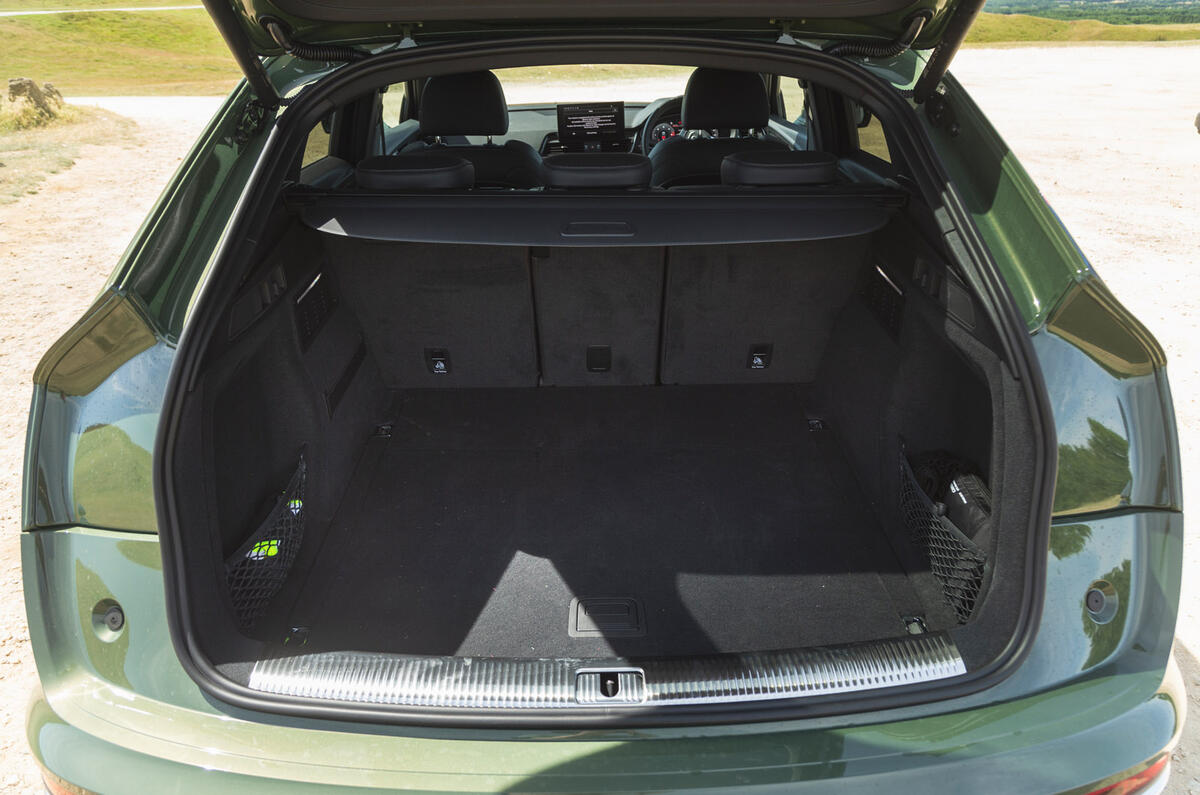
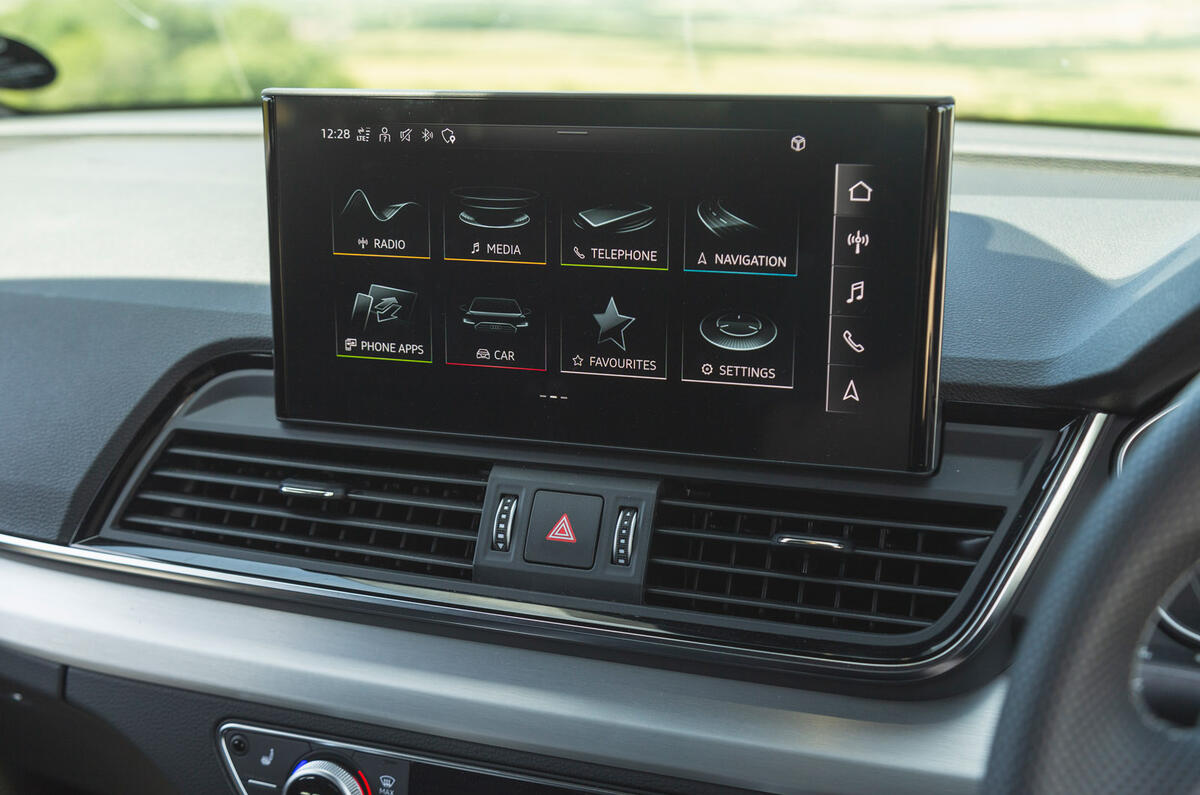
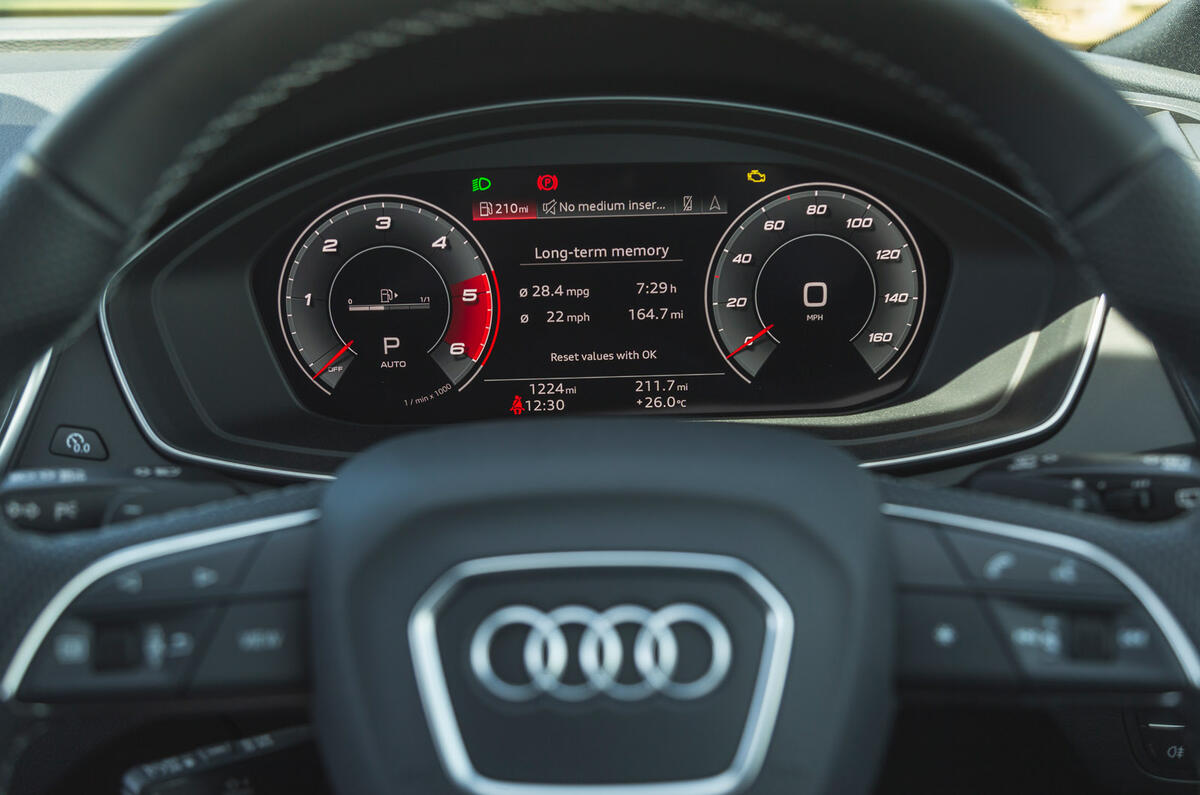

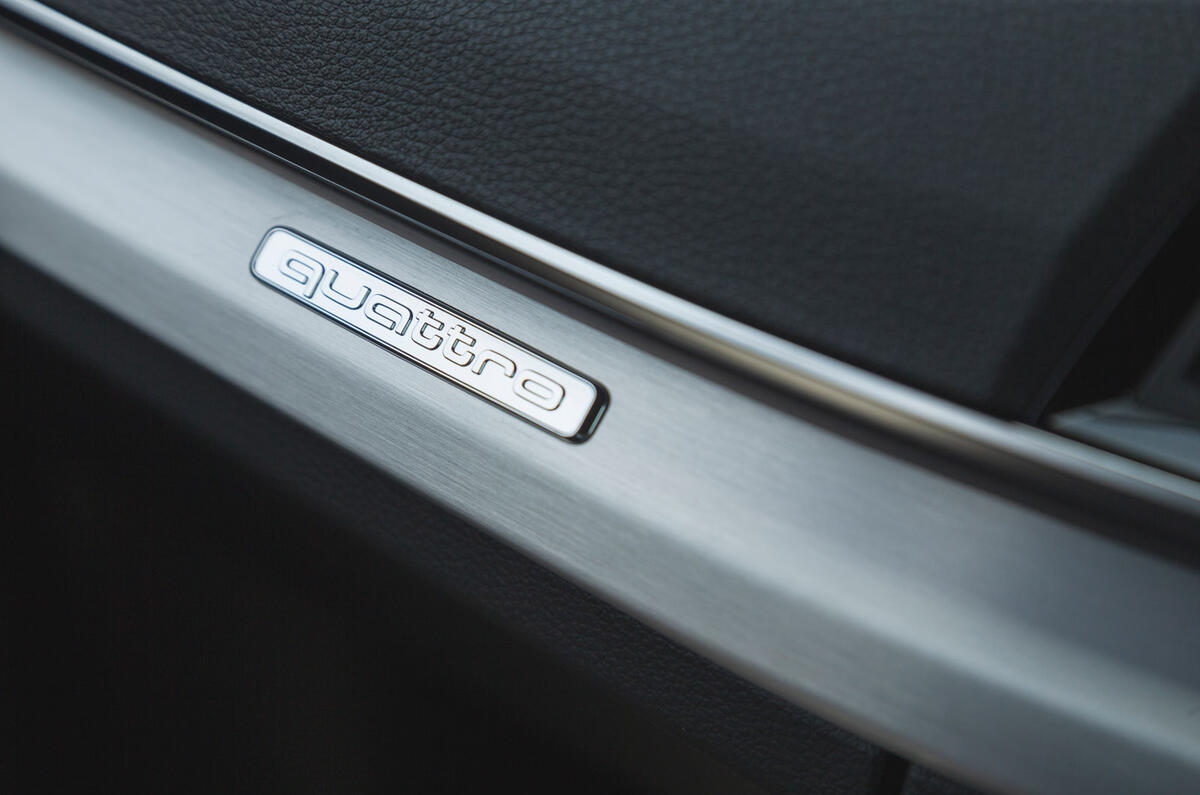
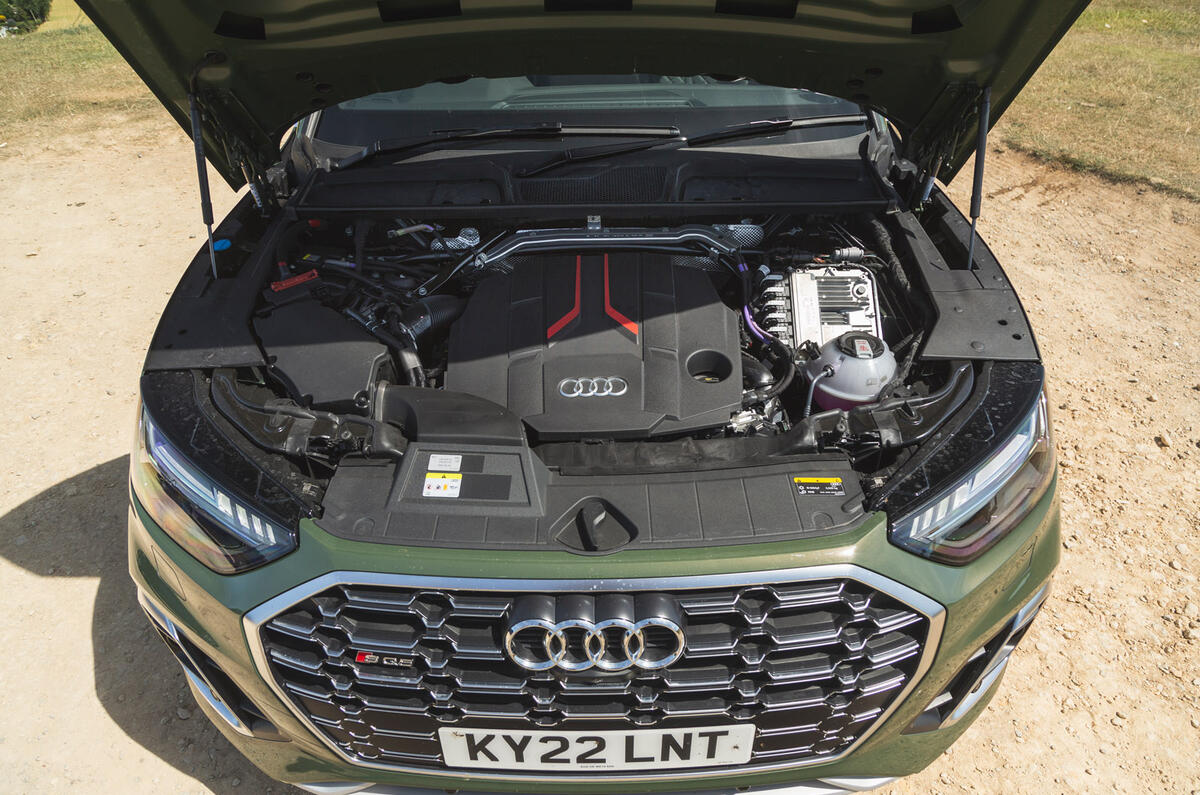
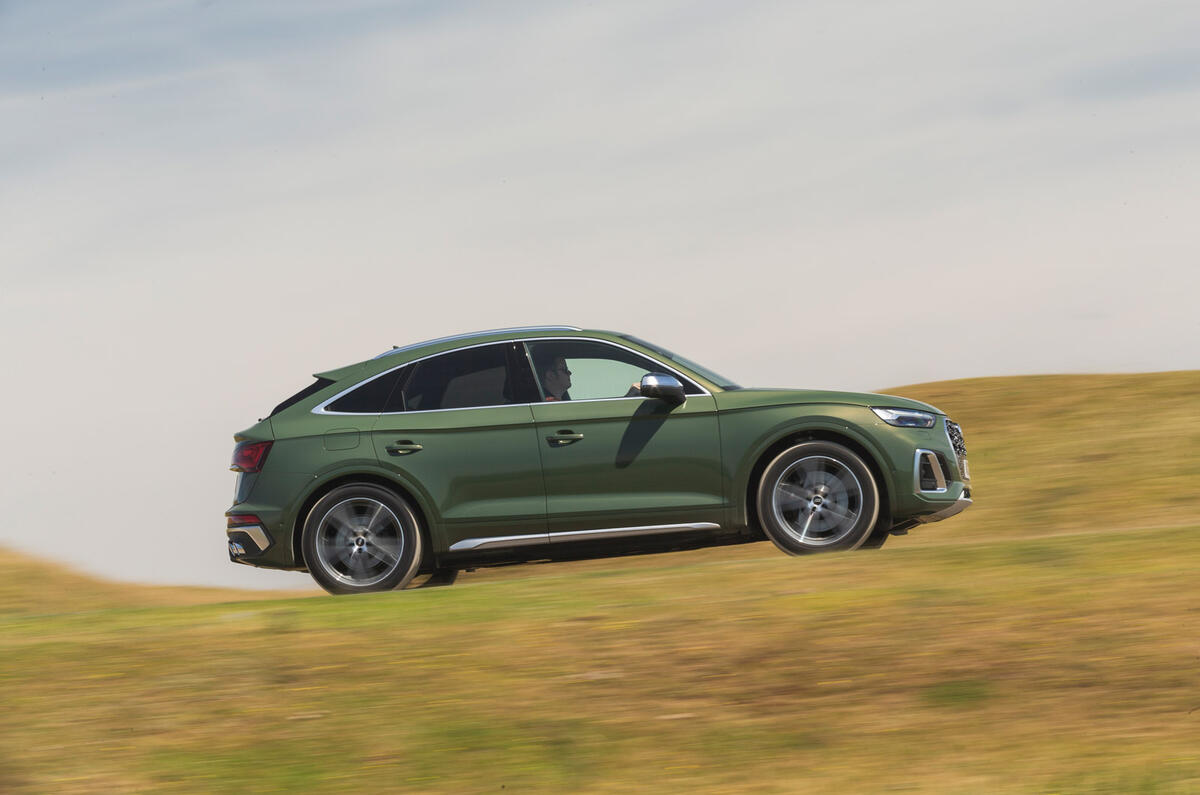
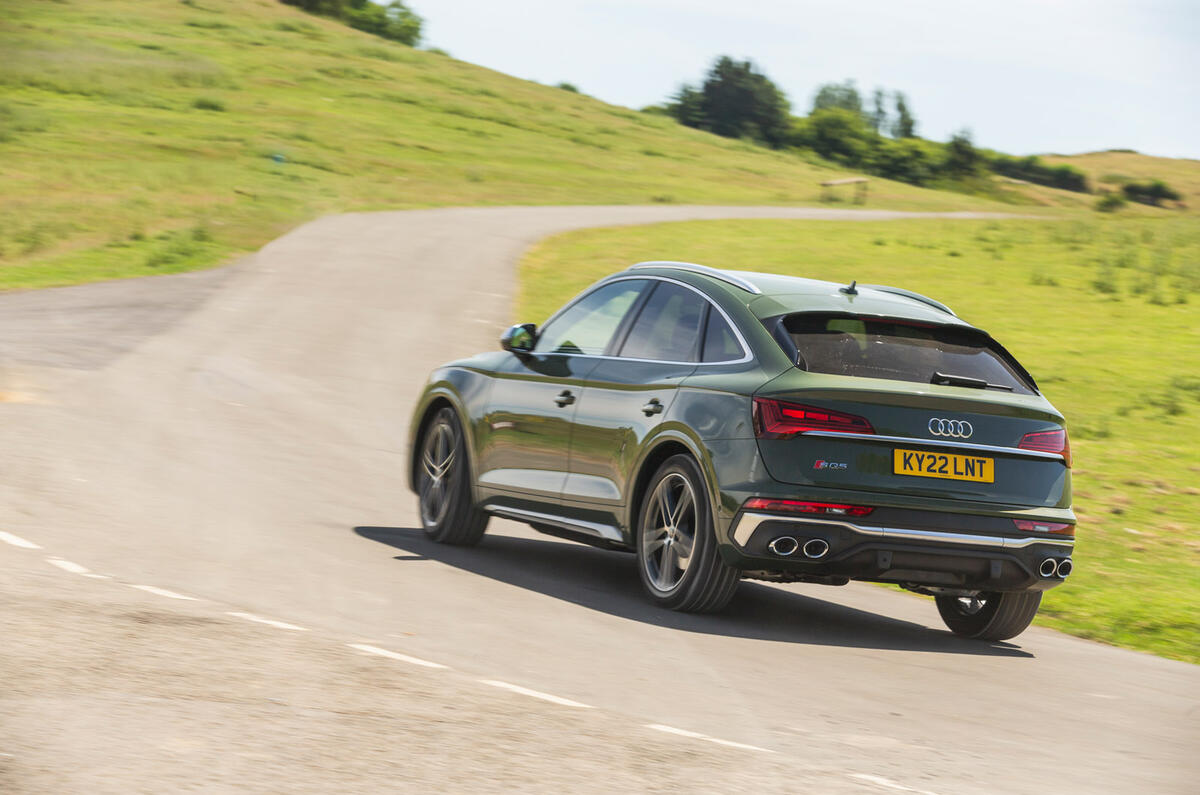
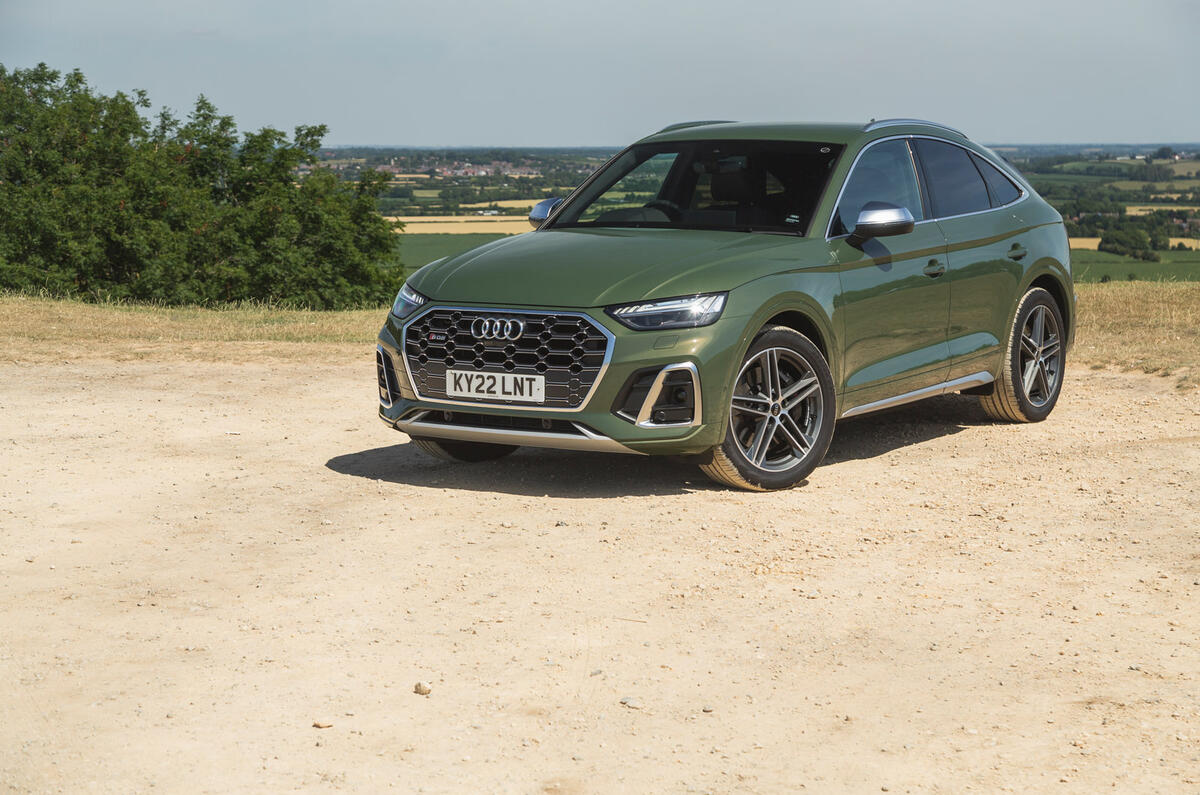
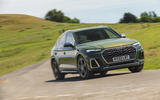
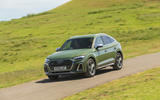

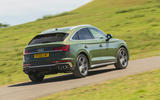

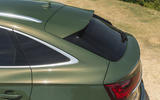
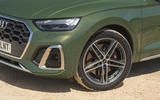
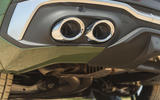
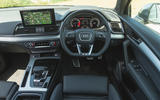

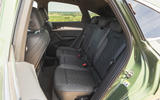
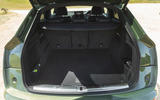
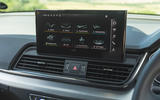
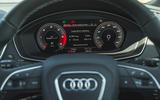
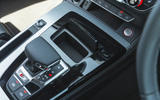

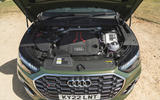
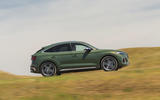
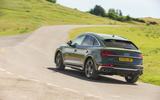
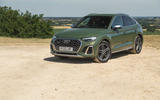

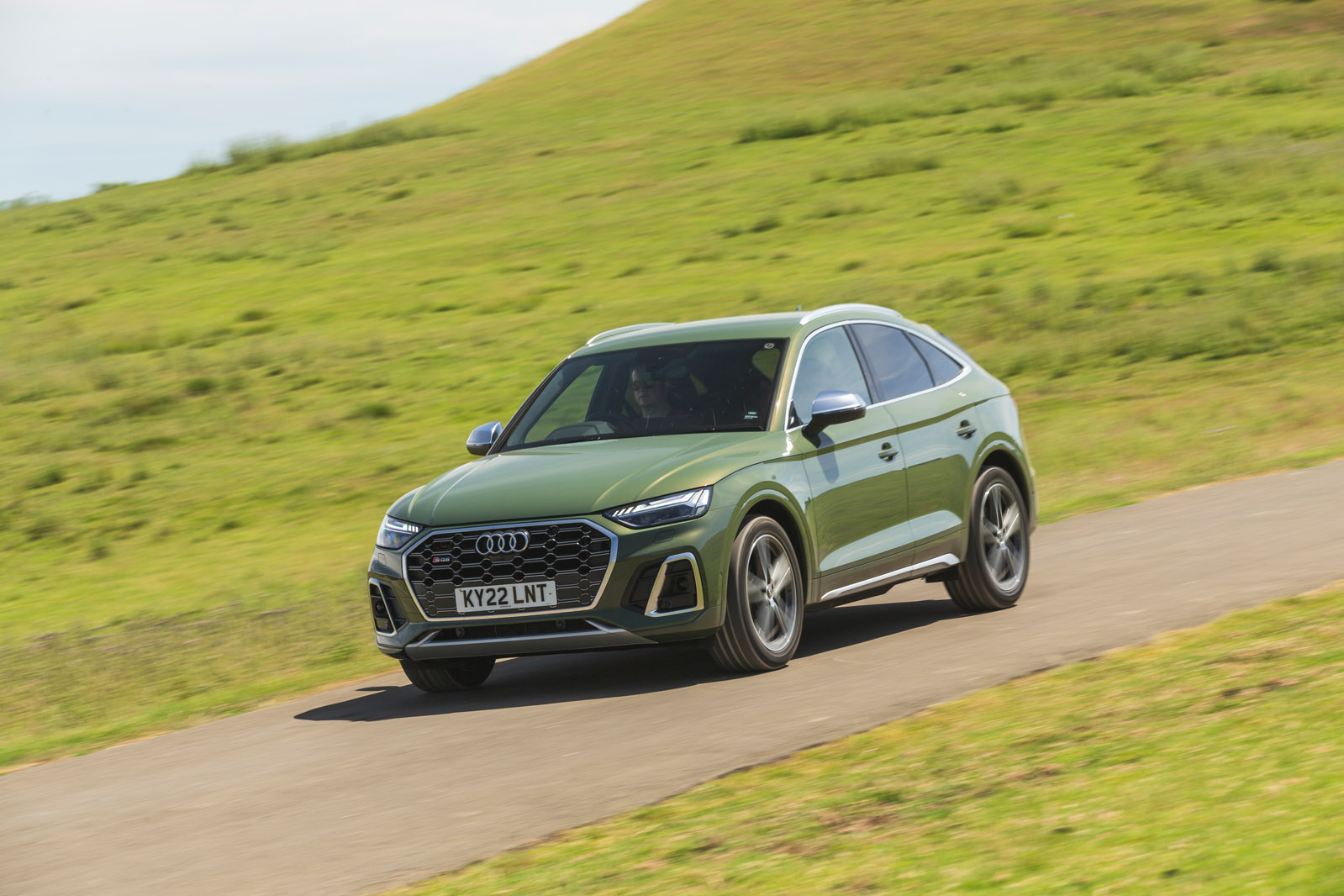
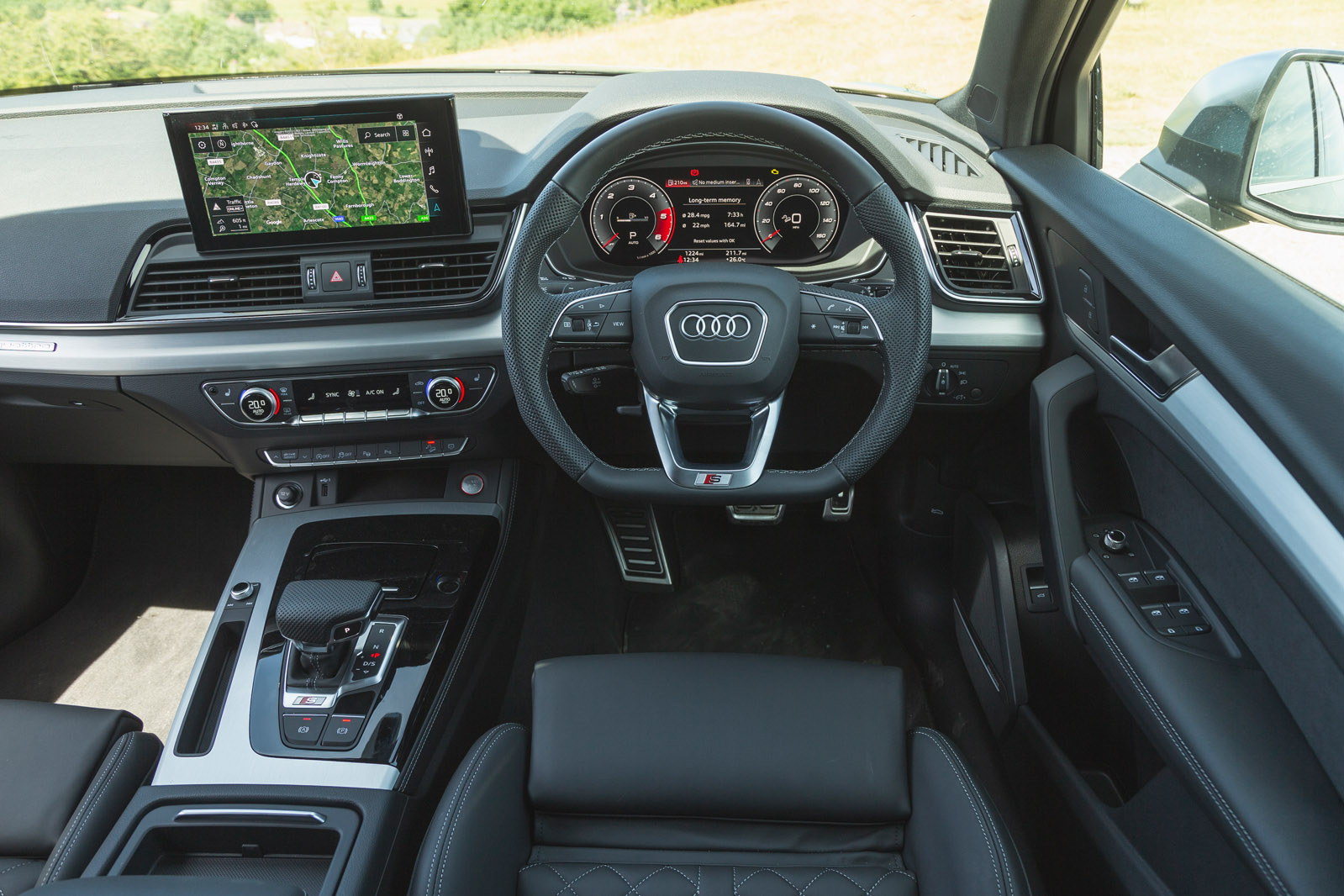

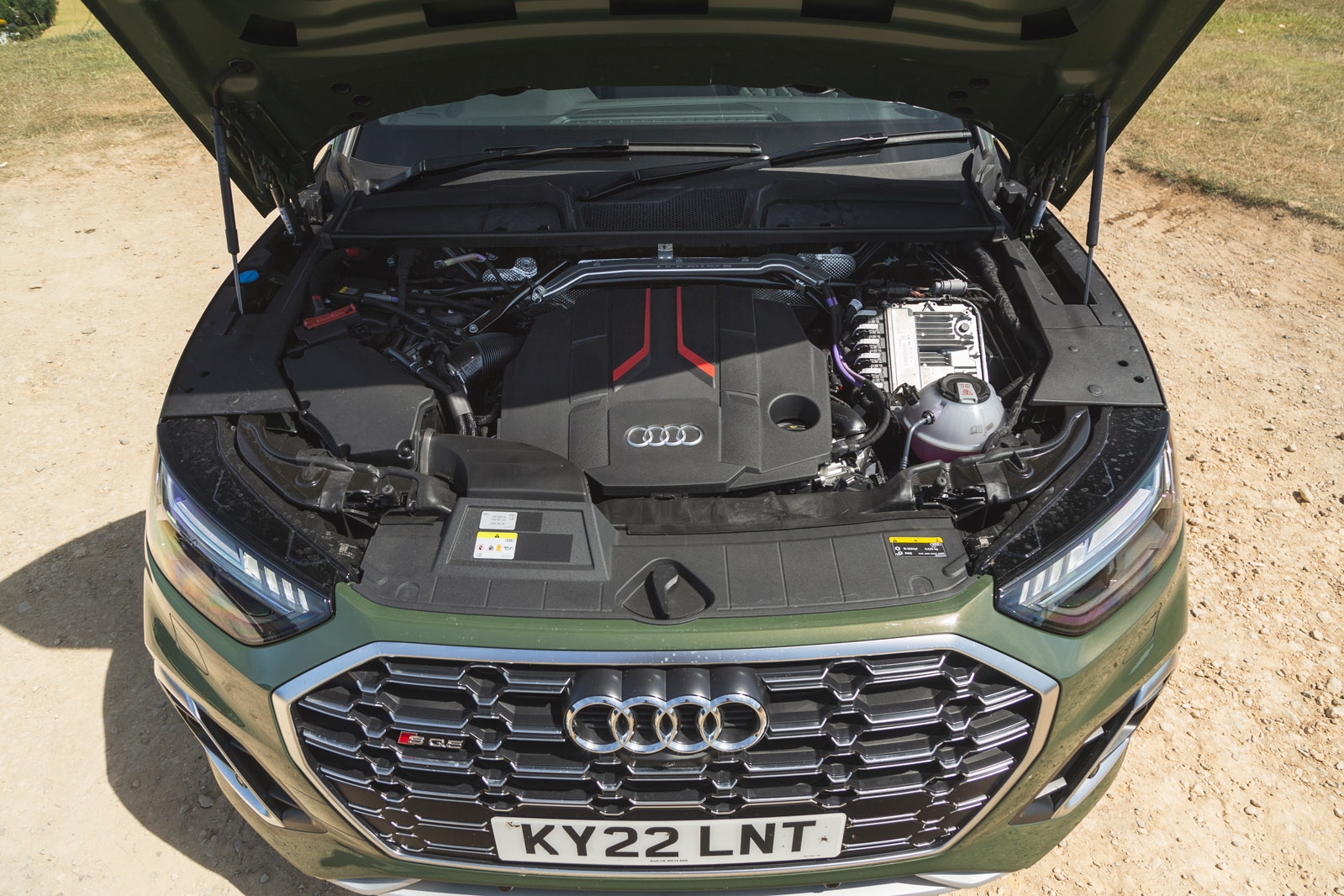
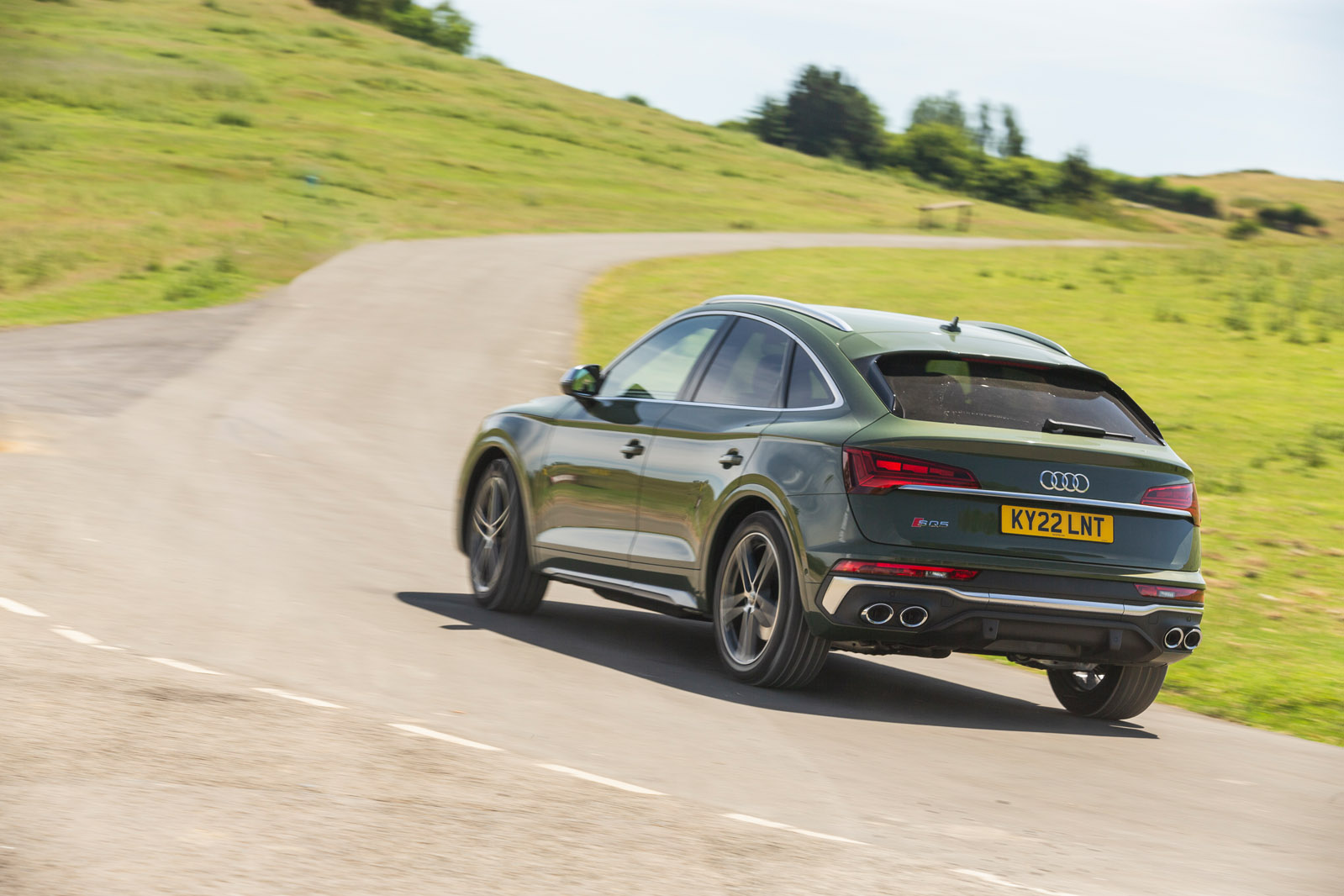
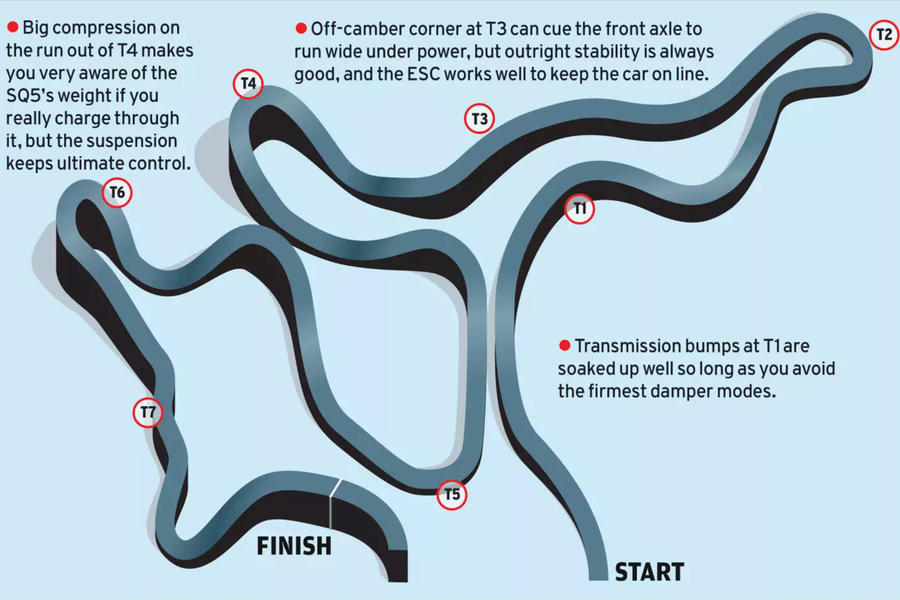 The SQ5 Sportback didn’t struggle to keep its mass in check around Millbrook’s tighter bends, or to conjure or carry big speeds on even its steepest gradients. It’s stable, fairly fast and willing to be hustled around flatter bends, finding great traction and decent power-on chassis balance.
The SQ5 Sportback didn’t struggle to keep its mass in check around Millbrook’s tighter bends, or to conjure or carry big speeds on even its steepest gradients. It’s stable, fairly fast and willing to be hustled around flatter bends, finding great traction and decent power-on chassis balance.